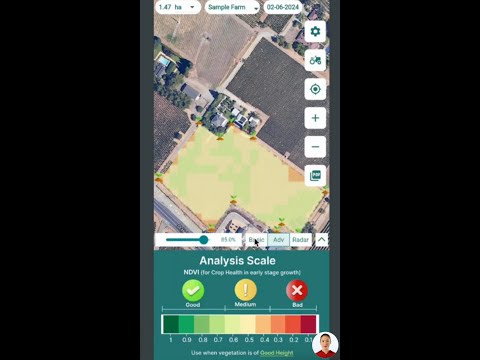Wisconsin Court Ruling: A Victory for Public Transparency in PFAS Contamination Discussions
“Wisconsin Court of Appeals ruled against a city for violating transparency laws in 100% of closed PFAS contamination discussions.”
In a landmark decision that resonates across the state of Wisconsin, the Court of Appeals has delivered a resounding victory for public transparency and environmental advocacy. This ruling, centered on the city of Marinette’s handling of PFAS contamination discussions, not only highlights the critical importance of open government but also sets a precedent that will shape how municipalities address environmental concerns in the future.
As we delve into the intricacies of this case, we’ll explore the far-reaching implications for Wisconsin’s open meetings law, the public’s right to know about water contamination issues, and the delicate balance between governmental operations and citizens’ access to crucial environmental and health information.
The Heart of the Matter: PFAS Contamination and Closed-Door Discussions
At the core of this legal battle lies the issue of PFAS (per- and polyfluoroalkyl substances) contamination in Marinette’s water supply and the disposal of contaminated biosolids. PFAS, a group of man-made chemicals known for their persistence in the environment and potential health risks, have become a growing concern for communities across the United States. In Marinette, the contamination stemmed from the use of firefighting foam at Tyco’s Fire Technology Center, which had been flushed into the city’s sanitary sewers for an extended period.

The city council’s decision to hold closed sessions to discuss this critical environmental issue became the focal point of the lawsuit. These meetings, held on October 6 and 7, 2020, were ostensibly convened for “competitive or bargaining reasons.” However, the court found that the discussions went far beyond the narrow allowance for developing negotiating strategies.
The Lawsuit: A Stand for Transparency
Marinette alderperson Douglas Oitzinger, with the support of the Wisconsin Transparency Project, brought the lawsuit against the city. The legal action alleged that the city council violated Wisconsin’s open meetings law by failing to inform even its own members about the true nature of the closed sessions.
The court’s ruling revealed that instead of discussing negotiation strategies, the council was presented with:
- A fully negotiated settlement between Tyco and Marinette’s mayor and utilities operations manager
- Explanations on how the sludge had been contaminated with PFAS
- Details on drying equipment and its cost-saving potential for shipping
- Terms of the agreement with Tyco
This level of detail and finality in the discussions clearly overstepped the boundaries of what should be discussed in a closed session, according to the court.
The Timeline of Contamination and Cover-up
To fully appreciate the significance of this ruling, it’s essential to understand the sequence of events that led to this point:
| Date | Event | Impact on Transparency |
|---|---|---|
| Pre-2017 | Tyco flushes firefighting foam into Marinette’s sanitary sewers | Public unaware of potential contamination |
| 2017 | PFAS discovered in groundwater | Initial public awareness of the issue |
| September 2018 | DNR requests Marinette to stop spreading biosolids | Limited public information on contamination spread |
| October 6, 2020 | First closed session on PFAS settlement | Public excluded from crucial discussions |
| October 7, 2020 | Second closed session on engineering recommendations | Further limitation of public access to information |
| November 3, 2020 | Council approves Tyco agreement | Decision made without full public scrutiny |
| 2023 | Court of Appeals ruling | Significant victory for public transparency |
This timeline illustrates a pattern of decisions made behind closed doors, limiting public knowledge and participation in a matter of significant environmental and health concern.
The Court’s Decision: A Triumph for Open Government
The Wisconsin Court of Appeals’ ruling is unequivocal in its support for public transparency. The court found that the city of Marinette had indeed violated the state’s open meetings law. This decision carries several important implications:
- It reinforces the public’s right to be informed about environmental threats and their associated costs.
- It sets a precedent for how government agencies statewide must handle similar situations in the future.
- It requires specific reasons to be provided for closed sessions, enhancing accountability.
- It ensures that public board members can make informed decisions before voting to enter closed sessions.
The court’s recommendation for publication of this ruling further solidifies its impact, making it binding on all government agencies across Wisconsin.
The Broader Context: PFAS Contamination and Public Health
While this case centers on legal and procedural matters, it’s crucial to understand the broader context of PFAS contamination and its implications for public health and the environment. PFAS chemicals have been used in various industries for decades, valued for their water and grease-resistant properties. However, their persistence in the environment and potential health risks have raised significant concerns.
In the case of Marinette, the contamination affected not only the city’s wastewater treatment plant but also spread to agricultural fields through the use of biosolids as manure. This highlights the complex nature of environmental contamination and the far-reaching consequences of industrial practices on water resources, soil health, and potentially, the food chain.
The court’s emphasis on the public’s right to know about these issues underscores the importance of transparency in addressing environmental challenges. When communities are fully informed, they can better participate in decision-making processes and hold their representatives accountable for actions that affect public health and the environment.
The Role of Technology in Environmental Monitoring and Transparency
As we consider the implications of this court ruling, it’s worth noting the growing role of technology in environmental monitoring and promoting transparency. Advanced tools and platforms are increasingly being used to track environmental changes, monitor water quality, and provide real-time data to both authorities and the public.
For instance, satellite-based monitoring systems, like those offered by Farmonaut, can play a crucial role in identifying and tracking environmental changes over time. While Farmonaut’s primary focus is on agricultural applications, the principles of remote sensing and data analysis can be applied to various environmental monitoring tasks, including water resource management and land use changes that might impact water quality.
“The court decision impacts 100% of Wisconsin government agencies, mandating specific reasons for all closed sessions on environmental issues.”
Implications for Government Agencies and Public Officials
The court’s ruling has significant implications for government agencies and public officials across Wisconsin:
- Enhanced Accountability: Officials must now provide specific, detailed reasons for entering closed sessions, particularly when discussing environmental issues.
- Informed Decision-Making: Public board members are now better positioned to make informed decisions about entering closed sessions, understanding the potential legal risks involved.
- Financial Consequences: The ruling reinforces that violations of open meetings law can result in financial penalties, with board members potentially liable for fines of up to $300.
- Precedent Setting: This case sets a precedent that may influence how similar cases are handled in other jurisdictions, potentially leading to greater transparency nationwide.
These implications underscore the need for government agencies to prioritize transparency and public engagement, especially when dealing with issues that have significant impacts on community health and the environment.
The Importance of Public Participation in Environmental Decision-Making
This court ruling highlights the critical role of public participation in environmental decision-making processes. When citizens are informed and engaged, they can:
- Provide valuable local knowledge and perspectives
- Hold decision-makers accountable
- Advocate for more comprehensive environmental assessments
- Support or challenge proposed solutions based on community needs
- Ensure that environmental justice considerations are taken into account
By emphasizing the public’s right to know, this ruling strengthens the foundation for meaningful community involvement in addressing environmental challenges.
The Road Ahead: Implementing Transparency in Environmental Governance
As Wisconsin government agencies adapt to this ruling, we can expect to see several changes in how environmental issues are addressed:
- More Open Discussions: Agencies may opt for more open sessions when discussing environmental contamination and remediation efforts.
- Improved Communication: There may be an increase in proactive communication from local governments to keep the public informed about environmental concerns.
- Enhanced Record-Keeping: Agencies are likely to implement more rigorous record-keeping practices to justify any closed sessions.
- Greater Use of Technology: We may see increased adoption of technology solutions to facilitate public access to environmental data and decision-making processes.
These changes can contribute to a more informed and engaged citizenry, better equipped to participate in environmental governance.
The Role of Environmental Monitoring in Promoting Transparency
As we consider the implications of this court ruling on transparency in environmental discussions, it’s worth exploring how advanced monitoring technologies can support these efforts. While not directly related to the legal aspects of the case, tools for environmental monitoring can play a crucial role in providing accurate, timely data to both officials and the public.
For instance, satellite-based monitoring systems, such as those used in precision agriculture, can be adapted for environmental monitoring purposes. These technologies can help track changes in land use, water bodies, and vegetation health over time, providing valuable insights into potential environmental issues.
Farmonaut, while primarily focused on agricultural applications, demonstrates the potential of such technologies. Their satellite-based crop health monitoring and AI-driven advisory systems showcase how advanced data analysis can provide real-time insights into environmental conditions.

While Farmonaut’s focus is on agriculture, the principles behind their technology – such as using multispectral satellite images to monitor vegetation health and soil moisture levels – could potentially be applied to broader environmental monitoring efforts. This type of technology could support transparency initiatives by providing objective, data-driven insights into environmental conditions.
Lessons for Other Jurisdictions
The Wisconsin Court of Appeals’ ruling offers valuable lessons for other jurisdictions grappling with similar issues of transparency in environmental governance:
- Prioritize Openness: Err on the side of openness when discussing environmental issues that affect public health and safety.
- Clear Communication: Provide clear, specific reasons for any closed sessions related to environmental matters.
- Public Engagement: Develop robust strategies for public engagement and information dissemination on environmental issues.
- Leverage Technology: Explore the use of technology to enhance environmental monitoring and public access to information.
- Legal Compliance: Regularly review and update procedures to ensure compliance with open meetings laws and other transparency requirements.
By learning from this case, other jurisdictions can proactively improve their transparency practices and build trust with their communities on environmental issues.
The Intersection of Environmental Justice and Transparency
The Wisconsin court ruling also touches on the important issue of environmental justice. By ensuring that discussions about environmental contamination are held in the open, the ruling supports the principle that all community members have the right to be informed about and participate in decisions that affect their environmental health.
This is particularly crucial in cases involving PFAS contamination, which can have long-lasting impacts on water resources and public health. Transparency in these matters helps ensure that:
- All affected communities, regardless of socioeconomic status, have access to information about environmental risks.
- Decision-making processes consider the perspectives and needs of all stakeholders, including vulnerable populations.
- Resources for mitigation and remediation are allocated fairly and effectively.
- There is accountability for industrial practices that may disproportionately affect certain communities.
By promoting transparency, this ruling contributes to the broader goal of environmental justice, ensuring that all citizens have equal protection from environmental and health hazards.
The Economic Implications of Environmental Transparency
While the primary focus of this ruling is on public transparency and environmental protection, it’s also important to consider the economic implications. Greater transparency in environmental governance can have several economic effects:
- Informed Investment: Businesses and individuals can make more informed decisions about property investments when they have access to information about environmental contamination.
- Cost Allocation: Open discussions about contamination and cleanup costs can lead to more equitable distribution of these expenses between polluters and the public.
- Innovation Incentives: Transparency about environmental challenges can drive innovation in clean-up technologies and prevention strategies.
- Tourism and Recreation: Protecting water resources through transparent governance can preserve the economic benefits of tourism and recreation in affected areas.
- Agricultural Impact: For farming communities, transparency about water and soil contamination is crucial for maintaining the viability and safety of agricultural operations.
These economic considerations underscore the far-reaching impacts of environmental transparency beyond just legal and health concerns.
The Role of Citizen Science in Environmental Monitoring
As we consider the implications of this ruling for public engagement in environmental issues, it’s worth noting the growing role of citizen science in environmental monitoring. While not directly related to the legal aspects of the case, citizen science initiatives can complement official monitoring efforts and support the goal of transparency.
Citizen science projects focused on water quality monitoring, for example, can:
- Provide additional data points to supplement official monitoring efforts
- Increase public awareness and engagement with local environmental issues
- Help identify potential contamination issues early
- Foster a sense of community ownership over environmental protection efforts
While citizen science data may not always meet the rigorous standards required for regulatory decisions, it can play a valuable role in promoting transparency and public engagement in environmental governance.
The Future of Environmental Governance in Wisconsin and Beyond
As we look to the future, this court ruling sets the stage for a new era of environmental governance in Wisconsin and potentially beyond. We can anticipate:
- More robust public participation in environmental decision-making processes
- Increased use of technology for environmental monitoring and data sharing
- Greater emphasis on proactive communication from government agencies on environmental issues
- Potential legislative updates to further clarify and strengthen open meetings laws
- Increased collaboration between government agencies, scientific institutions, and community organizations in addressing environmental challenges
These developments have the potential to create a more informed, engaged, and resilient approach to environmental governance.
Conclusion: A Landmark Victory for Transparency and Environmental Protection
The Wisconsin Court of Appeals ruling in the Marinette PFAS contamination case represents a significant victory for public transparency and environmental advocacy. By affirming the public’s right to be informed about crucial environmental issues, this decision strengthens the foundation of democratic governance and environmental protection.
As government agencies adapt to this ruling, we can expect to see more open discussions, improved communication, and greater public engagement in environmental decision-making processes. This shift towards transparency not only supports better environmental outcomes but also fosters trust between communities and their elected officials.
While challenges remain in addressing PFAS contamination and other environmental issues, this ruling provides a clear directive for how these challenges should be approached: with openness, accountability, and a commitment to public participation. As we move forward, it will be crucial for all stakeholders – from government officials to community members – to embrace this spirit of transparency and work collaboratively towards sustainable environmental solutions.
In the words of Douglas Oitzinger, the alderperson who brought the lawsuit: “Democracy is a little bit stronger today in Wisconsin because of this court decision.” Indeed, this ruling not only strengthens democracy in Wisconsin but also sets a powerful precedent for environmental governance across the nation.
FAQs
- What is PFAS and why is it a concern?
PFAS (per- and polyfluoroalkyl substances) are a group of man-made chemicals used in various industries. They are persistent in the environment and have been linked to various health concerns, making their presence in water supplies a significant issue. - How does this ruling affect other Wisconsin municipalities?
The ruling sets a precedent that requires all Wisconsin government agencies to provide specific reasons for closed sessions, particularly when discussing environmental issues. This enhances transparency across the state. - What are the potential penalties for violating open meetings laws?
Public board members can be liable for fines of up to $300 for violating open meetings laws. - How can citizens stay informed about environmental issues in their communities?
Citizens can attend public meetings, engage with local environmental groups, and utilize public records requests to stay informed about environmental issues in their communities. - What role can technology play in environmental monitoring and transparency?
Technology, such as satellite-based monitoring systems and data analysis tools, can provide real-time insights into environmental conditions, supporting transparency efforts and informed decision-making.
For those interested in leveraging technology for environmental monitoring and sustainable agriculture practices, consider exploring the solutions offered by Farmonaut:
For developers interested in integrating environmental monitoring capabilities into their own applications, check out the Farmonaut API and the comprehensive API Developer Docs.






